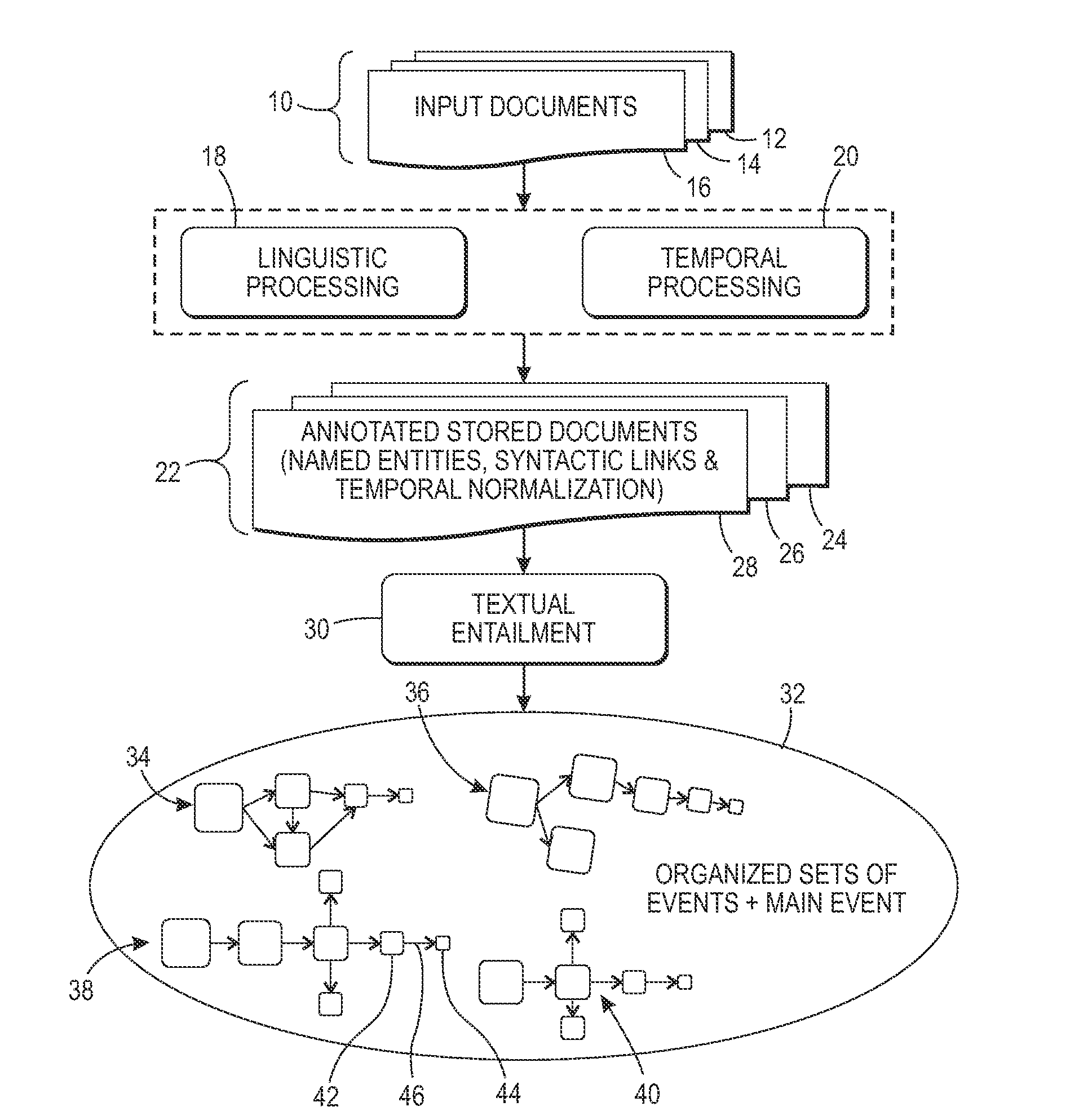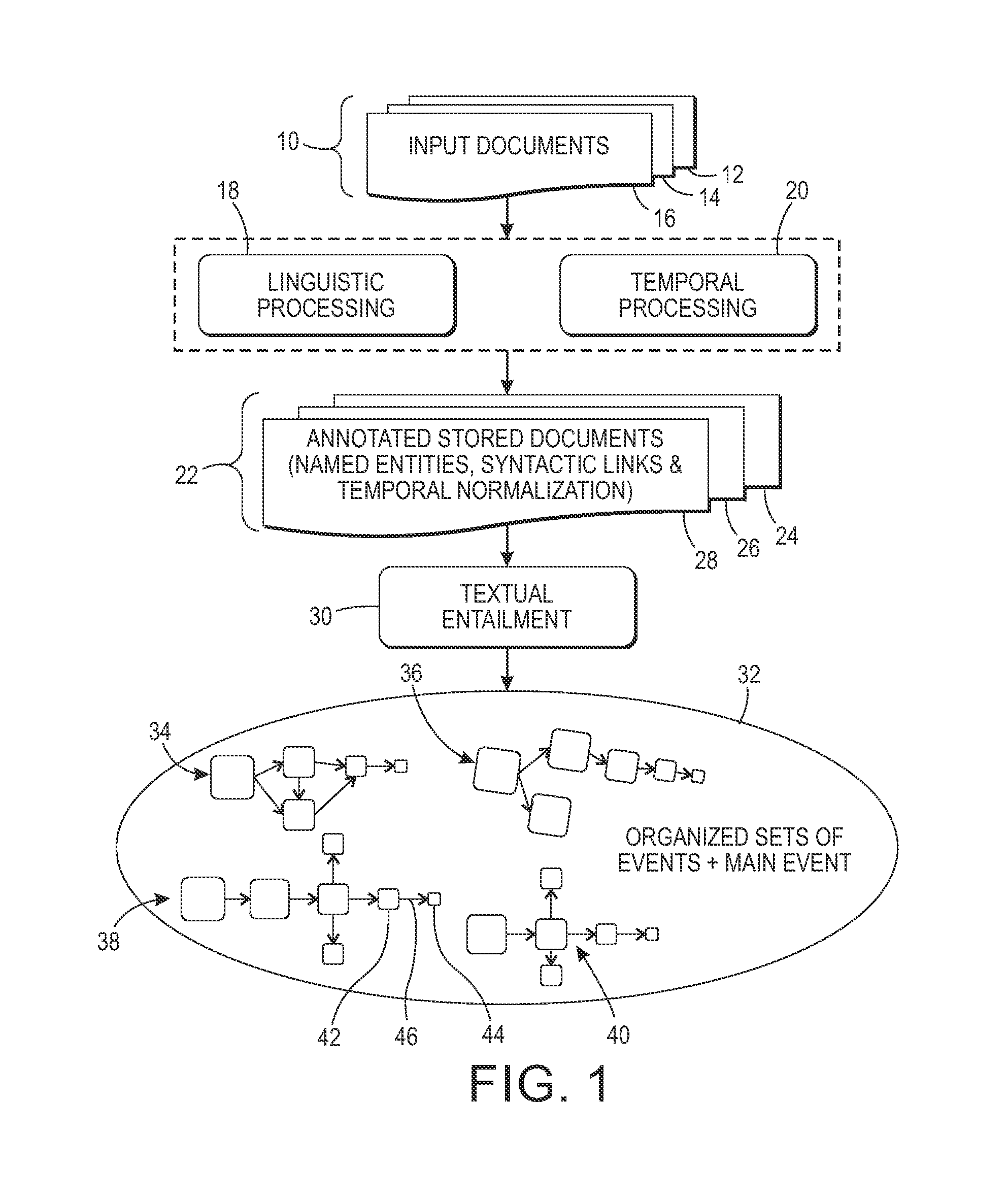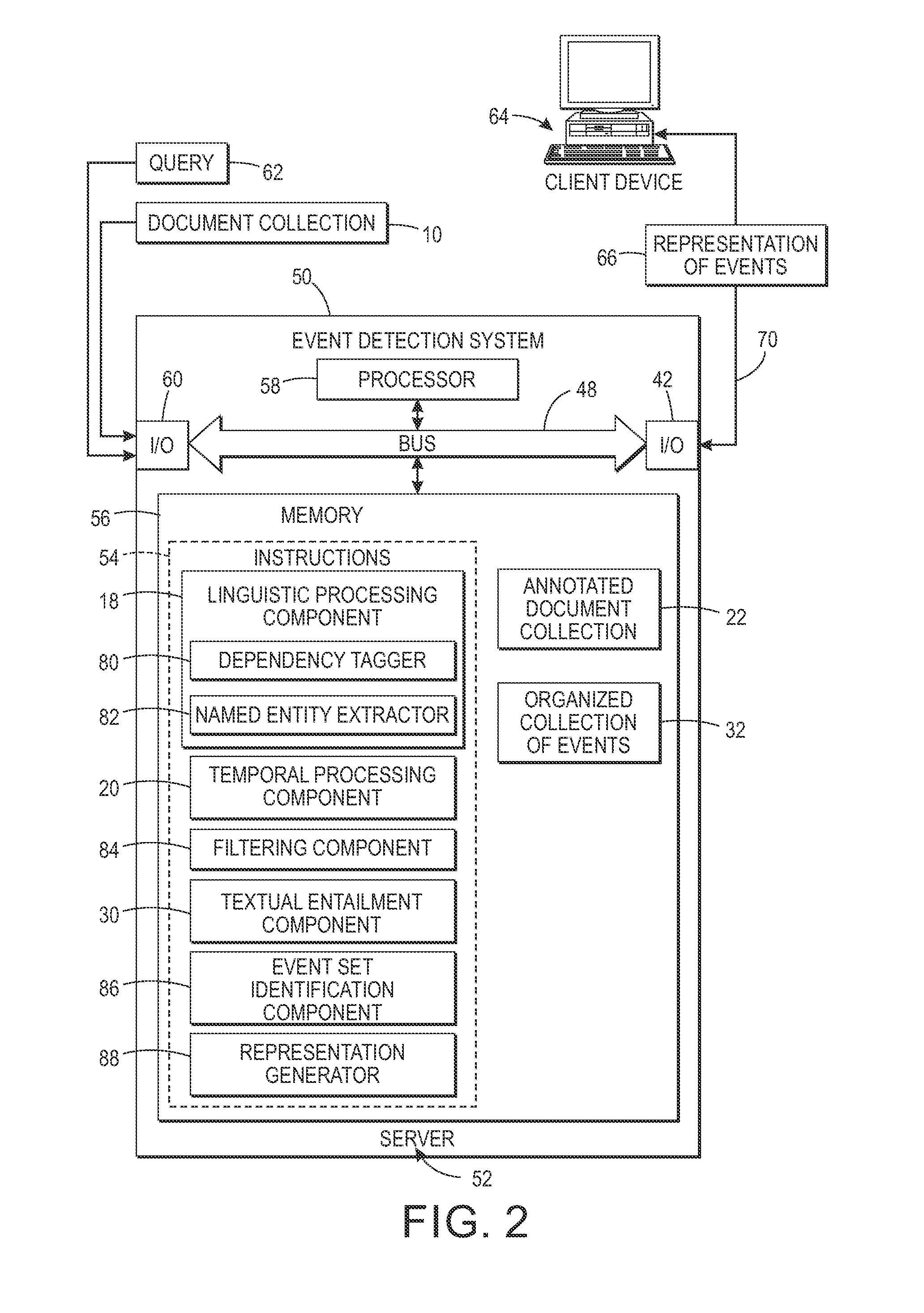Combining temporal processing and textual entailment to detect temporally anchored events
a temporal processing and temporal anchoring technology, applied in the field of combining temporal processing and textual anchoring to detect temporal anchoring events, can solve the problems of large amount of redundancy in articles, difficulty in manually sifting through information, and time-consuming
- Summary
- Abstract
- Description
- Claims
- Application Information
AI Technical Summary
Benefits of technology
Problems solved by technology
Method used
Image
Examples
example 1
[0129]This first experiment aims at evaluating whether a textual entailment-based system is relevant for event detection from a large collection of news articles based on a specific query including keywords and a temporal expression. In this experiment, the large collection of news articles is the AFP (Agence France-Presse) corpus (600,000 news articles produced between 2010 and 2012).
[0130]The system was tested on a query which could be described as: “all the events that occurred in Haiti during the year 2010.”
[0131]A parser based on that described in Salah Aït-Mokhtar, et al., “Robustness beyond shallowness: incremental dependency parsing,” Special Issue of the NLE Journal, 2002. The parser was augmented with a temporal processing and normalization module (see Kessler 2012). Based on the linguistic and temporal processing, 11 million predicates, 340,000 temporal expressions, and 5 million Named Entities were extracted from this corpus.
[0132]Given the output of this parser (compone...
example 2
[0153]Currently, journalists may browse, based on simple keywords, millions of news articles from large news archives and extract events they consider relevant enough for a specific chronology (chronology example: “all the main events in Haiti during 2010”). The present system may create such a chronology automatically, or provide a draft. Given a query from the journalist, a draft of a chronology may be automatically generated by the system. The journalist can clean it up or add further information in order to create a deliverable chronology. In this example, a chronology of major events created by the exemplary system was compared with a chronology with a ground truth which is a list of chronologies manually created by experts (in this case, journalists).
[0154]From the ground truth, for each chronology, the following information is obtained:
[0155]a) The initial query used by the journalist in order to find news articles related to the chronology (s) he has to create.
[0156]b) The s...
PUM
 Login to View More
Login to View More Abstract
Description
Claims
Application Information
 Login to View More
Login to View More - R&D
- Intellectual Property
- Life Sciences
- Materials
- Tech Scout
- Unparalleled Data Quality
- Higher Quality Content
- 60% Fewer Hallucinations
Browse by: Latest US Patents, China's latest patents, Technical Efficacy Thesaurus, Application Domain, Technology Topic, Popular Technical Reports.
© 2025 PatSnap. All rights reserved.Legal|Privacy policy|Modern Slavery Act Transparency Statement|Sitemap|About US| Contact US: help@patsnap.com



